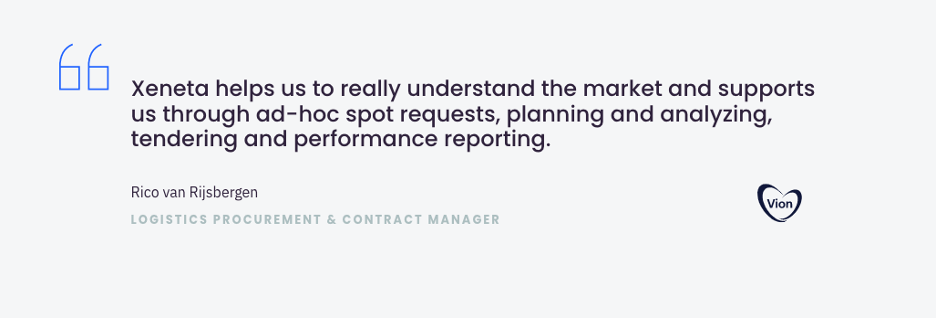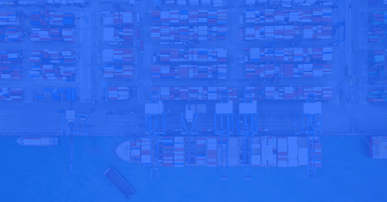For all shippers, market volatility continues to be a huge challenge. For those dealing in reefer freight, where capacity is limited and freight rates are climbing, there is an even bigger need to stay on top of market movements, disruptions and fluctuating rates. But what is the best way to get a true pulse on the market and benchmark your rates (rather than manually asking peer companies, who might not tell you anyway)?
Your safest bet is to rely on neutral, real-time data from the entire market, not just certain individuals, to fully understand how your prices compare to your peers and the larger market. This is where Xeneta comes in. We have more coverage of real-time reefer freight data on the main trade lanes than anyone in the market. This enables our users to benchmark their rates, negotiate with confidence, reduce tender rounds and ultimately, make strategic procurement decisions.
Addressing a Challenging Reefer Market
In our recent conversations with shippers regarding the state of the reefer freight market, these are the three issues that come up the most –
- Reefer freight rates are forecasted to accelerate through 2022.
- Capacity and equipment availability issues are leaving no room for rate negotiation.
- Being pushed onto the spot market makes it difficult to forecast and budget without access to relevant market data.
Approximately 20 per cent of Xeneta’s existing customers carry refrigerated containers, and that is why we introduced reefer data to our existing customers back in 2017.

“We had numerous requests for reefer rate data from our customer base and the general market,” said Patrik Berglund, CEO Xeneta after the initial launch.
“In particular, customers shipping perishables and pharmaceuticals were looking for the same type of real-time rate market intelligence we provide for dry containers. Because of the flexible and scalable technology behind our platform, we were quickly able to offer reefer rate data so that customers could instantly switch between the dry container and reefer rates.”
In our February 2022 State of the Market Webinar for Ocean Freight Market – presented by industry experts Peter Sand, Chief Analyst at Xeneta, and Emily Stausbøll, Market Analyst at Xeneta, we discussed some of the major challenges in the reefer market to help you gain a better understanding of your current position in the market as well as how you can be more strategic and competitive in your procurement.
Due to the massive price increase over the last few years, Reefer is still in direct competition with dry container shipping. Tight equipment availability out of Europe and the delayed harvesting seasons in South America have had massive impacts on equipment availability as well.
Addressing capacity and equipment challenges starts by having the right data. Xeneta works with hundreds of shipping companies worldwide to crowdsource ocean and air freight rate data anonymously - populating a market intelligence platform that is transforming the shipping and logistics industry through transparency.
Our platform has been developed in such a way that it can easily accept dry container and reefer data simultaneously via a simple upload of customer rate sheets and automatically display the anonymous rate data in insightful analytics.
Do any of the challenges described above apply to you?
Xeneta is helping your peers and competitors combat these challenges. A real-time database of reefer freight rates enables you to understand current and historical market behaviour – reporting live on market average and low/high movements for both short- and long-term contracts. See what one of our reefer customers, Nouryon, has to say about Xeneta data.
Xeneta’s Ocean Intelligence offers freight rate market intel for 20' & 40' standard dry, 20' & 40' reefer and 40' HC containers. With over 500 million contracted container and air freight rates and over 170,000 global trade routes, our coverage of real-time reefer freight data on the main trade lanes is higher than anyone in the market.
When you start comparing your prices to the market rates, you’ll begin to identify budgetary increases or reductions, align expectations with internal stakeholders, spot opportunities for next year and evaluate lost opportunities for the year that passed. It’s time to start doing procurement strategically and proactively, rather than reacting to what the market hands you.
If you want to see how Xeneta can support your procurement strategy, request a demo today to look at relevant trade lanes on our platform and get some key takeaways.
About Xeneta
Xeneta is the leading ocean and air freight rate benchmarking and market intelligence platform transforming the shipping and logistics industry. Xeneta’s powerful reporting and analytics platform provides liner-shipping stakeholders the data they need to understand current and historical market behavior – reporting live on market average and low/high movements for both short and long-term contracts. Xeneta’s data is comprised of over 500 million contracted container and air freight rates and covers over 170,000 global ocean trade routes and over 60,000 airport-airport connections. Xeneta is a privately held company with headquarters in Oslo, Norway and regional offices in New York and Hamburg.
To learn more, please visit www.xeneta.com.








